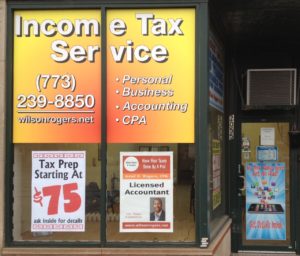Our 10th Year Anniversary!
So this tax season was a little more challenging than anticipated; thus the reason this post is coming out in October. Needless to say, back on September 14, 2005 Wilson Rogers & Company came into existence. That means that 2015 marks 10 years of us being in business! A lot has happened in that time frame. So with this post, we thought we would not only recap our history, but just how we were able to make it that long.
2005
So after years of Jared getting “hey, your’re an accountant, I have a tax question for you.” he and Aaronita Wilson decided to start a tax company. “What are we going to call it?” was the question for a while. “How about we call it Rogers Wilson” Aaronita would say. “Nah, how about Wilson Rogers?” Jared replied. “Kind of sounds like a person. Some estately dude on a horse playing polo. It also sounds like another tax company we know…” And with that, Wilson Rogers & Company took form.
2006
This was the first year that we actually started doing returns for pay. Some of the key highlights:
- Mr. Asberry becomes “client number one” by sending us his information.
- Mr. Simpson becomes the first transmitted return as he was quicker to process than Mr. Asberry!
- Jared and Aaronita get married on September 22, 2006, thus effectively removing a person named “Wilson” from the company. Don’t worry, people still ask to speak to Wilson Rogers when they come to the office!
2007-2010
These were the “slow years” for the most part as there really wasn’t much that changed. Client levels stayed pretty consistent and revenues were largely flat. This was primarily due to the fact that both Aaronita and Jared maintained full time jobs within Corporate America. This would start to change in the following year.
2011
Sometime towards the end of 2011, the decision was made that Jared would leave Corporate America to head up our first “retail” office. Up until this point, all the tax returns were done “in house” by making appointments to pick up documents, preparing the returns at night and then providing the completed return to the client at a later date. 2011 was filled with decisions about health insurance, resignation dates and how to outfit the new office. Somehow, someway, it all managed to come together.
Tax Season? Ready, Set, Go!
So this was the first tax season with the new office. If you want to read the recap on how it went, you can check that out here. Some of the things that you won’t see in this post:
- Mr. Campbell had the honor of becoming “retail client number one” on a cold day in January. He had all his paperwork…we didn’t have the nice frilly folders to give him his tax return in. Oh man…the early days!
- At the same time we were opening the office, Jared was moonlighting with the fine folks of Intuit with their Turbotax Ask A Tax Expert (ATE) team. It was also the year that he broke the wrist on his dominant hand and had to finish out tax season using his left hand. Talk about bad handwriting!
- We also took many steps into the marketing world to help get the word out. One of these included developing relationships with sites like Teaspiller (which was later acquired by Intuit)
2013
So we survived another retail office tax season. That recap can be found here. The one standout item for this year was that Teaspiller was purchased by Intuit and folded into the TurboTax brand. What that did was drive additional tax preparation business to us that was above and beyond what we had projected. It also continued Jared’s relationship with Intuit, which further broadened in late April when he became certified as a Quickbooks Proadvisor.
2014
This was the year that we hired “employee number one” so that Jared could have a little help. You can read all about Stephanie in a little interview that we did here. If you want to read about the season, that is located in this post. That post will also talk about how we began using bus benches to advertise to local traffic in our area!
2015
This was our fourth tax season with the office, and man did things really pick up. They picked up so much that we hired Patricia as “employee number two” to keep up with things. This was also the year that we launched www.fileoldtaxreturns.com to offer those needing to file older tax returns an option to do so.
How Did We Survive 10 Years?
Everyone knows the statistic that most businesses fail to make it to the 5 year mark. While we have been lucky enough to avoid the top 5 reasons businesses fail, we must admit that it takes a little more than that to last for 10 years. So what are the keys to the castle? In summary we think:
- Provide good service. If you don’t do that, you’ll be lucky if you last beyond a year.
- Value your customers. We have wonderful customers and we try to let them know that as frequently as possible. Without them, there would be no Wilson Rogers & Company.
- Stand out from your competitors. We’ve all heard that insanity is defined as doing the same thing over and over and expecting a different result. If you look, sound and act just like your competitors, expect to get their results – average! So be bold. Do things differently. Give the public what they want, not what YOU think they want.
- Make adjustments when necessary. Getting to 10 years has not been a straight line drive. We’ve had to adjust and pivot along the way. Have we made mistakes? You bet! Have we learned from them? Continuously. The key is to make adjustments when needed, forget the past and try to do better in the future. If you can do that (combined with the above points), then maybe one day we’ll be reading about how you survived your first ten years.
Here’s to a bright future!




